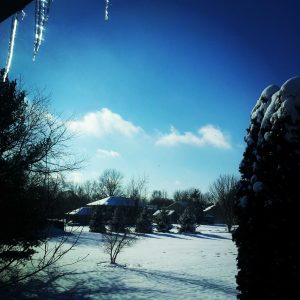Three ways to bundle up for the cold
March 3, 2014

Beyond the obvious method of wearing more, thicker clothes, staying warm can be a challenge.
1. Coat material- outer layer of nylon and synthetic down or goose feathers
Nylon is a synthetic fabric, made from petroleum products, and due to the dense structure of this material, nylon acts as a windbreaker against the cold winter air as well as rain and snow. When paired with down, either natural goose feathers or a synthetic down, nylon becomes an effective barrier against the cold. It also stands up well to rain, but if the downy fill gets wet, the down jacket is not as warm.
2. Scarf- thick wool infinity scarf
A thick scarf will always be helpful in keeping your neck warm, but an infinity scarf will assure that the scarf will never be blown off and it will cover the bottom half of the face to protect against the chill.
3. Gloves- down insulated
Best for dry conditions, down is nature’s best insulator and makes an excellent choice for very cold conditions with moderate activity. Made up of a combination of down plumules and feathers, this material traps air, which helps keep your hands insulated. Higher rated down garments will have greater insulating ability for their weight. Down’s insulating qualities are hard to beat in cold and dry conditions, but its advantages are reduced when wet and it can be slow to dry.





![Mock Trial members from Gold and Green team last year pose for a picture in front of the OCLRE building in Columbus. "We all put in so much work [last] year. I know [this] year we’ll come back improved and ready to win!” said Ogunbodede.](https://shsleaf.org/wp-content/uploads/2025/10/IMG_4121-300x205.jpg)
